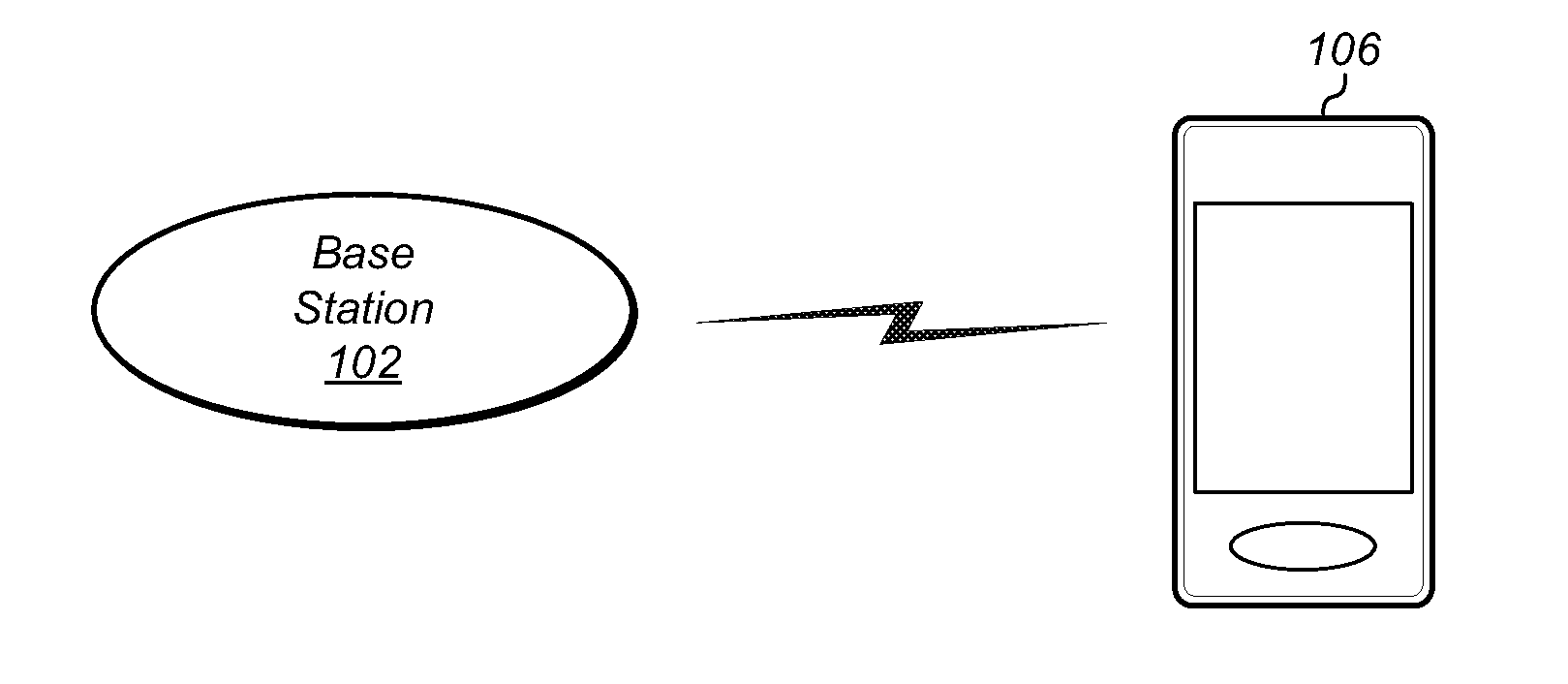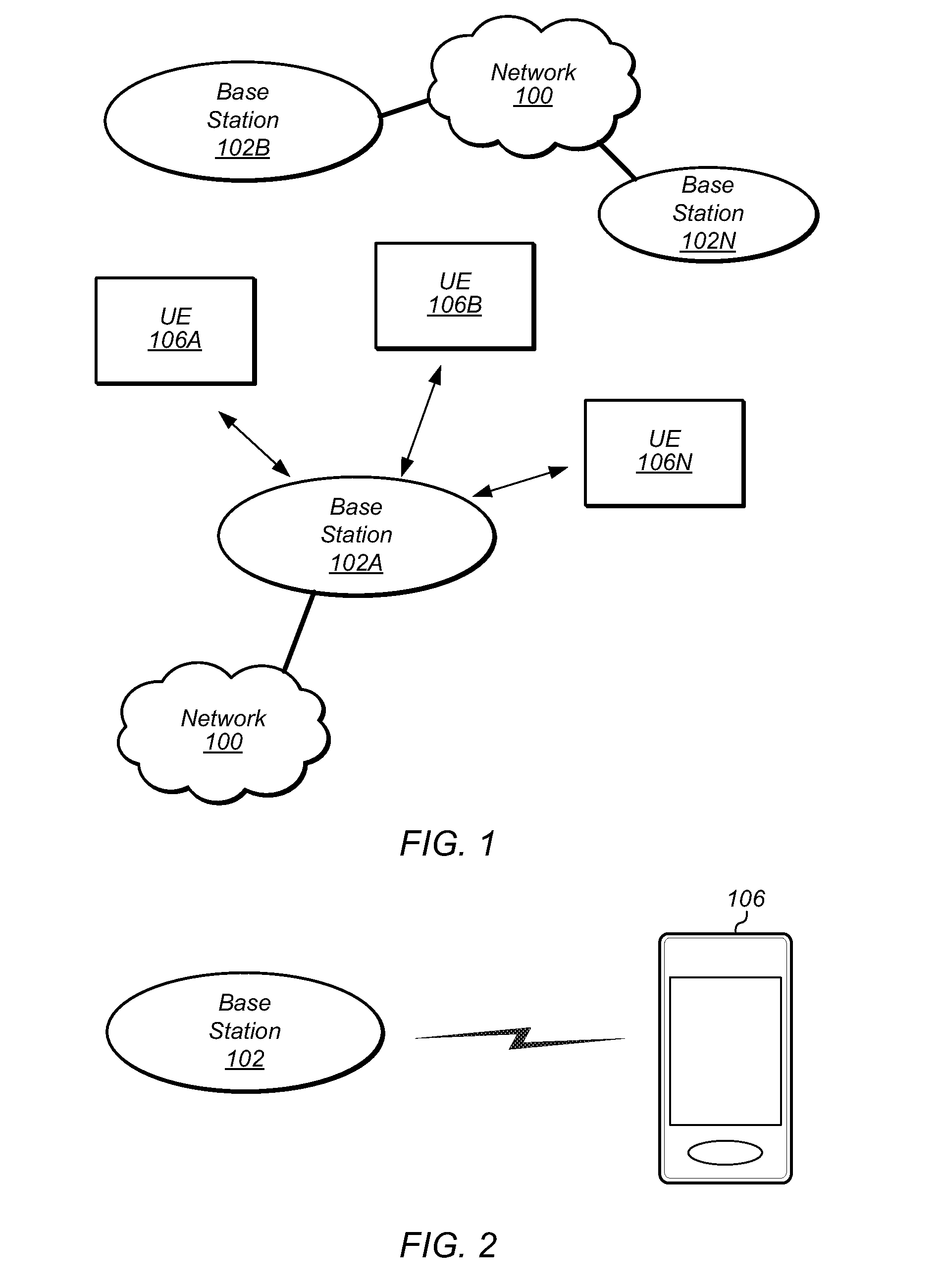Adaptive Neighboring Cell Measurement Scaling for Wireless Devices
- Summary
- Abstract
- Description
- Claims
- Application Information
AI Technical Summary
Benefits of technology
Problems solved by technology
Method used
Image
Examples
Embodiment Construction
Acronyms
[0022]The following acronyms are used in this disclosure:
[0023]UE: User Equipment
[0024]BS: Base Station
[0025]GSM: Global System for Mobile Communication
[0026]UMTS: Universal Mobile Telecommunication System
[0027]LTE: Long Term Evolution
[0028]TD-SCDMA: Time-Division Synchronous Code Division Multiple Access
[0029]TD-LTE: Time-Division LTE
[0030]FD-LTE: Frequency-Division LTE
Terms
[0031]The following is a glossary of terms used in this disclosure:
[0032]Memory Medium—Any of various types of non-transitory memory devices or storage devices. The term “memory medium” is intended to include an installation medium, e.g., a CD-ROM, floppy disks, or tape device; a computer system memory or random access memory such as DRAM, DDR RAM, SRAM, EDO RAM, Rambus RAM, etc.; a non-volatile memory such as a Flash, magnetic media, e.g., a hard drive, or optical storage; registers, or other similar types of memory elements, etc. The memory medium may include other types of non-transitory memory as wel...
PUM
 Login to View More
Login to View More Abstract
Description
Claims
Application Information
 Login to View More
Login to View More - R&D
- Intellectual Property
- Life Sciences
- Materials
- Tech Scout
- Unparalleled Data Quality
- Higher Quality Content
- 60% Fewer Hallucinations
Browse by: Latest US Patents, China's latest patents, Technical Efficacy Thesaurus, Application Domain, Technology Topic, Popular Technical Reports.
© 2025 PatSnap. All rights reserved.Legal|Privacy policy|Modern Slavery Act Transparency Statement|Sitemap|About US| Contact US: help@patsnap.com



